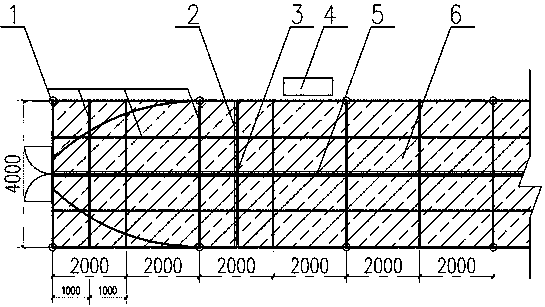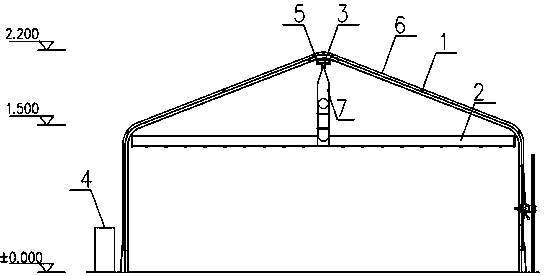Microorganism/animal and plant combined ecological restoration method for farmland soil cadmium pollution
A technology for ecological restoration and cadmium pollution, applied in the field of soil remediation, can solve the problems of destroying soil physical and chemical properties and microbial community structure, consuming large power, gas resources, energy supply limitations, etc., to achieve root development, low investment, and enhanced transfer Effect
- Summary
- Abstract
- Description
- Claims
- Application Information
AI Technical Summary
Problems solved by technology
Method used
Image
Examples
Embodiment 1
[0033] Introduce the cultivated "Daping No. 2" vermicompost into the cadmium-contaminated soil of farmland. The planting density is 10,000 per square meter. Add fine bait made of cow dung, pig manure, horse manure, sheep manure, and rabbit manure. The crushed particle size is kept at about 0.8mm, and the water content is 65%. One month before vermicomposting maturity, introduce Curvularia crescentus, and the addition amount is 3%. When it grows to 40-50 cm, it is harvested for the first time, and then it is harvested every 25 days. The harvested ryegrass is dried, crushed, and extracted. The soil of the farmland is repaired and the plastic greenhouse is equipped with a constant temperature and humidity control device. The indoor temperature of the greenhouse is controlled at 18°C. Keep soil moisture at 25%.
Embodiment 2
[0035]Introduce the cultivated "Daping No. 2" adult worms into the cadmium-contaminated soil of the farmland, the planting density is 9,000 per square meter, add pig, sheep, rabbit manure plus straw, rice straw crushed and mixed fine bait, the crushed particle size remains At about 0.5mm, the water content is 70%. After 50 days of cultivating adult worms, introduce Curvularia lunata, the addition amount is 3%, and at the same time, sow ryegrass, 1.3 kg per mu, and the grass grows to 40-50 cm. Harvest once, and then harvest once every 30 days. The harvested ryegrass is dried, crushed, and extracted. The soil of the farmland restoration is equipped with a constant temperature and humidity control device in a plastic greenhouse. The indoor temperature of the greenhouse is controlled at 20°C and the soil humidity is maintained at 30%.
PUM
 Login to View More
Login to View More Abstract
Description
Claims
Application Information
 Login to View More
Login to View More - R&D
- Intellectual Property
- Life Sciences
- Materials
- Tech Scout
- Unparalleled Data Quality
- Higher Quality Content
- 60% Fewer Hallucinations
Browse by: Latest US Patents, China's latest patents, Technical Efficacy Thesaurus, Application Domain, Technology Topic, Popular Technical Reports.
© 2025 PatSnap. All rights reserved.Legal|Privacy policy|Modern Slavery Act Transparency Statement|Sitemap|About US| Contact US: help@patsnap.com



